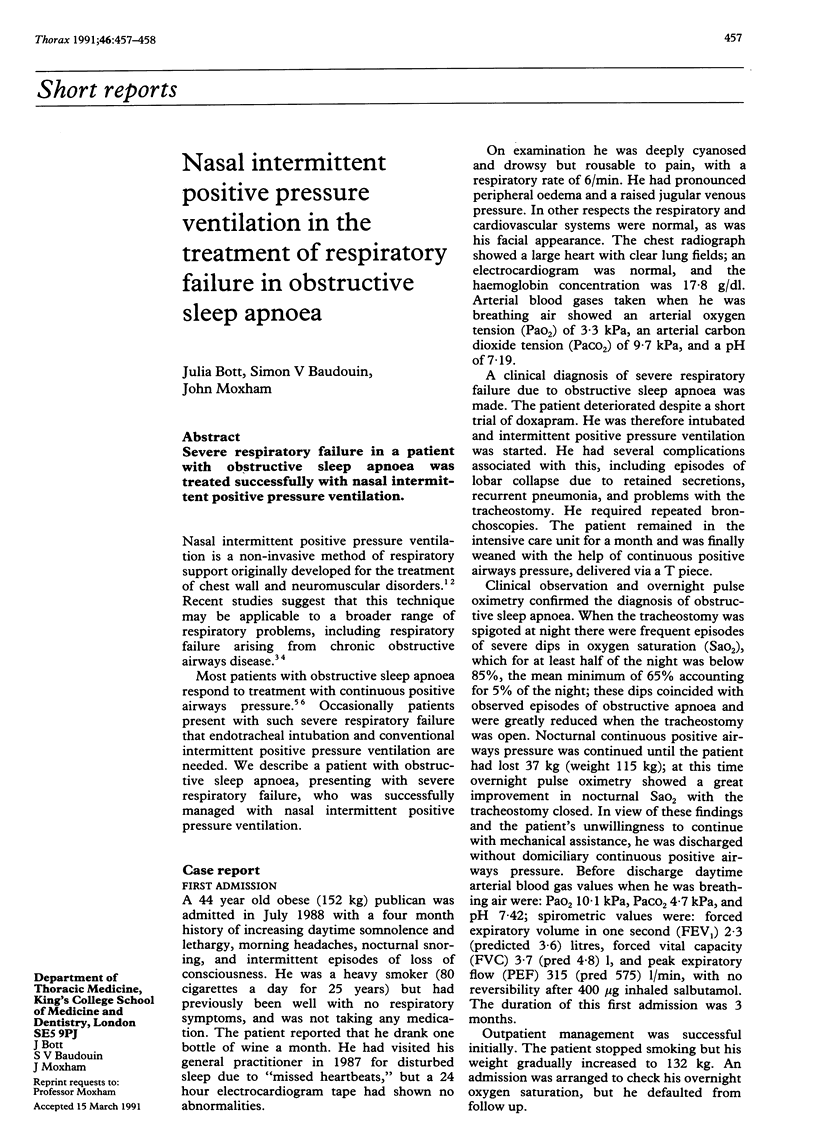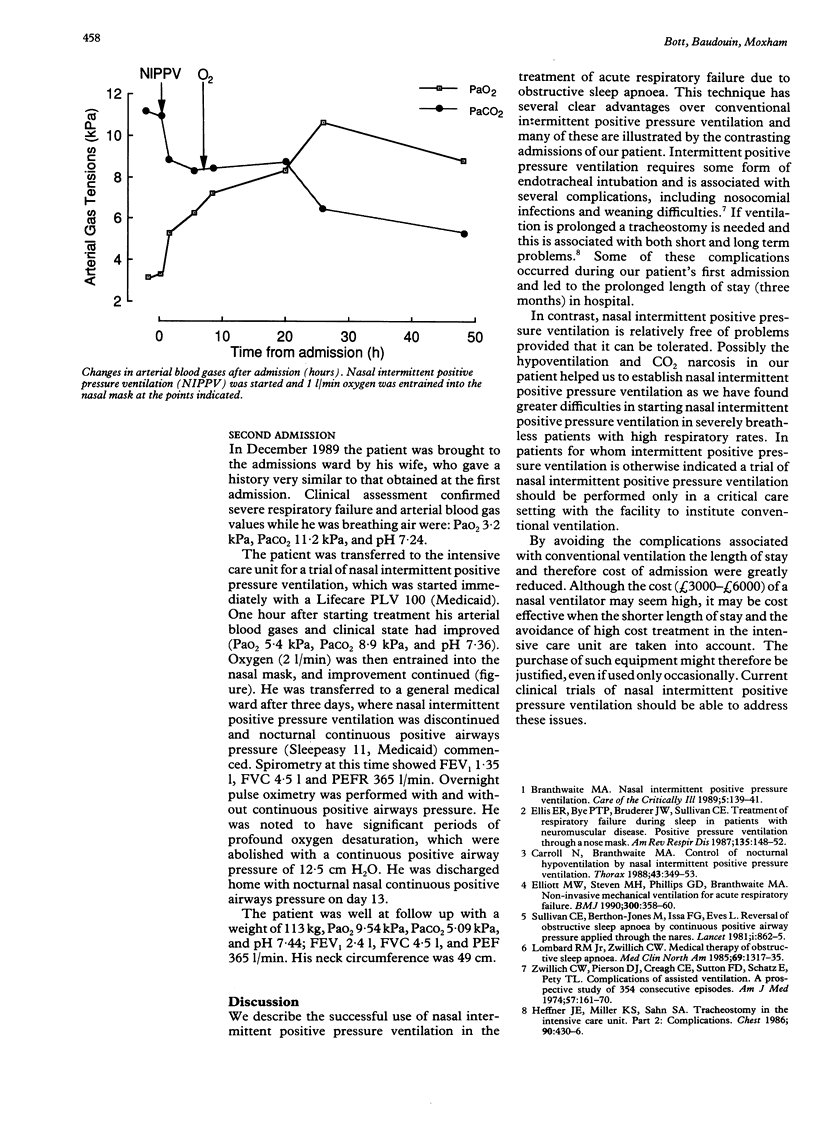Abstract
Severe respiratory failure in a patient with obstructive sleep apnoea was treated successfully with nasal intermittent positive pressure ventilation.
Full text
PDF

Selected References
These references are in PubMed. This may not be the complete list of references from this article.
- Carroll N., Branthwaite M. A. Control of nocturnal hypoventilation by nasal intermittent positive pressure ventilation. Thorax. 1988 May;43(5):349–353. doi: 10.1136/thx.43.5.349. [DOI] [PMC free article] [PubMed] [Google Scholar]
- Elliott M. W., Steven M. H., Phillips G. D., Branthwaite M. A. Non-invasive mechanical ventilation for acute respiratory failure. BMJ. 1990 Feb 10;300(6721):358–360. doi: 10.1136/bmj.300.6721.358. [DOI] [PMC free article] [PubMed] [Google Scholar]
- Ellis E. R., Bye P. T., Bruderer J. W., Sullivan C. E. Treatment of respiratory failure during sleep in patients with neuromuscular disease. Positive-pressure ventilation through a nose mask. Am Rev Respir Dis. 1987 Jan;135(1):148–152. doi: 10.1164/arrd.1987.135.1.148. [DOI] [PubMed] [Google Scholar]
- Heffner J. E., Miller K. S., Sahn S. A. Tracheostomy in the intensive care unit. Part 2: Complications. Chest. 1986 Sep;90(3):430–436. doi: 10.1378/chest.90.3.430. [DOI] [PubMed] [Google Scholar]
- Lombard R. M., Jr, Zwillich C. W. Medical therapy of obstructive sleep apnea. Med Clin North Am. 1985 Nov;69(6):1317–1335. doi: 10.1016/s0025-7125(16)30989-0. [DOI] [PubMed] [Google Scholar]
- Sullivan C. E., Issa F. G., Berthon-Jones M., Eves L. Reversal of obstructive sleep apnoea by continuous positive airway pressure applied through the nares. Lancet. 1981 Apr 18;1(8225):862–865. doi: 10.1016/s0140-6736(81)92140-1. [DOI] [PubMed] [Google Scholar]
- Zwillich C. W., Pierson D. J., Creagh C. E., Sutton F. D., Schatz E., Petty T. L. Complications of assisted ventilation. A prospective study of 354 consecutive episodes. Am J Med. 1974 Aug;57(2):161–170. doi: 10.1016/0002-9343(74)90440-9. [DOI] [PubMed] [Google Scholar]


